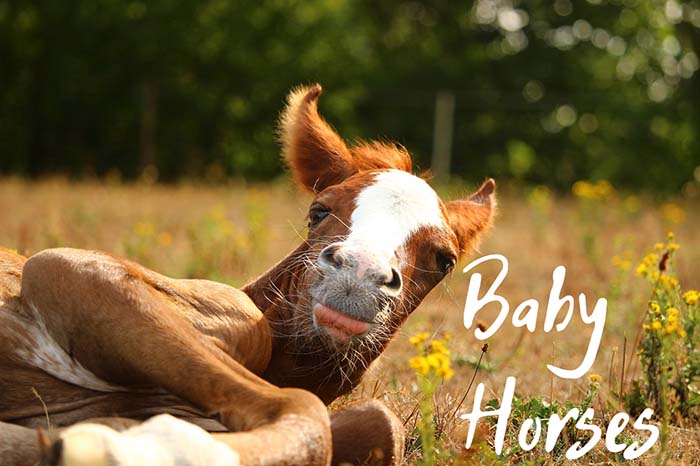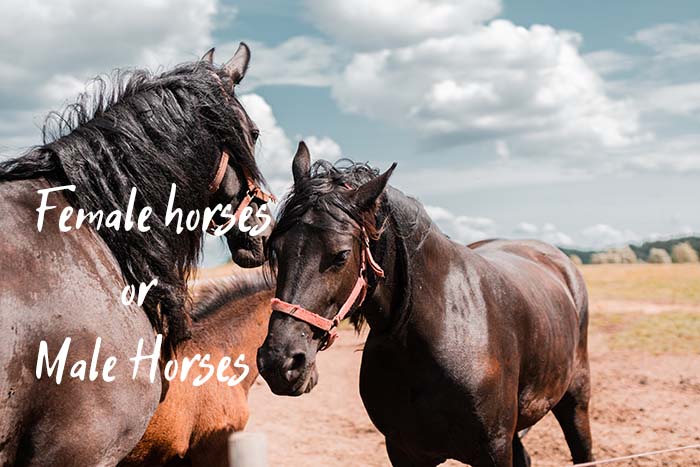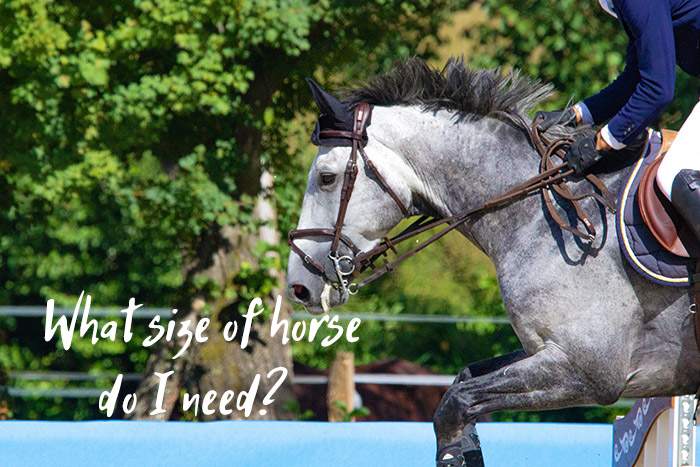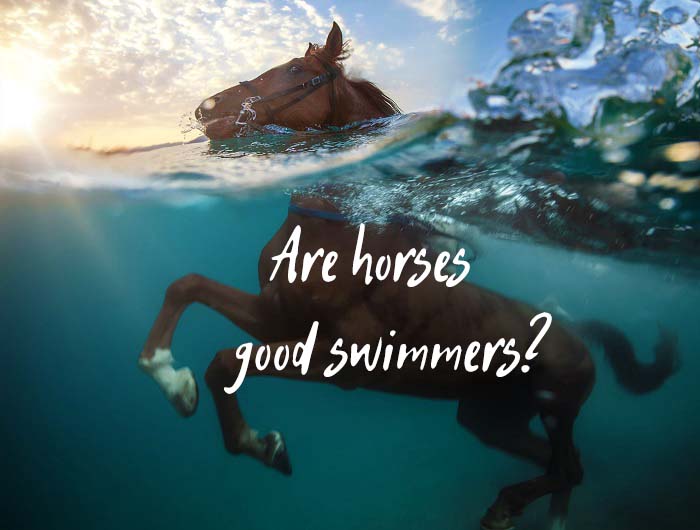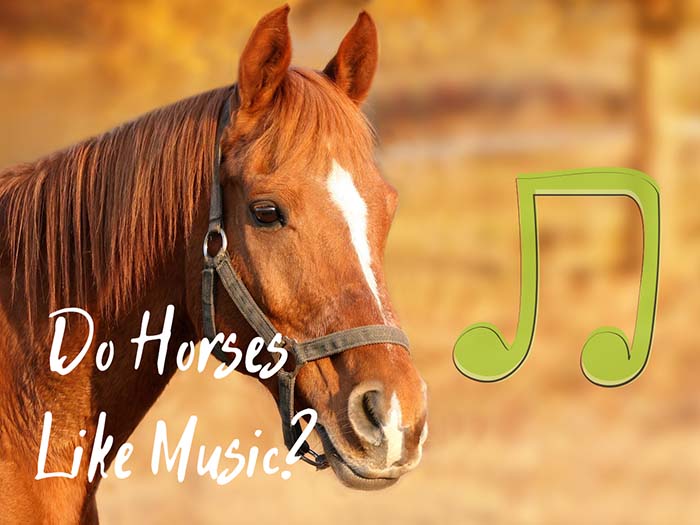What Are the 10 Rarest Horse Colors in the World?
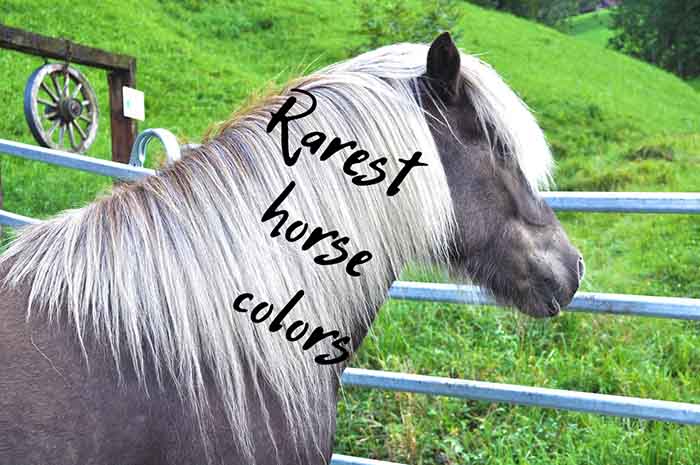
The rarest horse colors in the world: now that’s a subject that I wanted to write about for a long time. Horses come in many different colors, different breeds, and different sizes. They have varying temperaments, and some of them excel at specific kinds of activities. From a purely aesthetic point of view, a horse’s color is the first thing that catches our eye, particularly if it’s a rare horse color, or maybe just an unusual one.
It’s not easy to discern what are the 10 rarest horse colors, as research on this subject is incredibly scarce. However, I did manage to put together a bundle of information sourced from official records and personal experiences. The rarest horse colors are the ones that stand out the most: Cremello, Sabino, Buckskin, Perlino, Chocolate Palomino, Black, Silver Dapple, Flaxen Chestnut, Brindle, and Champagne.
Today I’m going to tell you a bit about each of these rare horse colors, including their genetics, looks, and what horses are most likely to don them.
Cremello.

What makes Cremello horses stand out is their beautiful cream coats, white manes and tails, as well as their piercing blue eyes. The skin of a Cremello horse is pink, which makes it prone to sunburn and other skin-related issues. Also known as pseudo-albinos, these horses possess two cream dilution genes, which makes their color double diluted.
Are Cremello horses rare? I would say so, as breeders usually get a 25% chance of obtaining a Cremello foal by breeding two Palominos together. Most Cremello horses are Quarter Horses, but this specific coloring can occur in pretty much any breed. If you would like to learn more about Cremellos, feel free to read up on this separate article that I wrote on the subject.
White Horses.
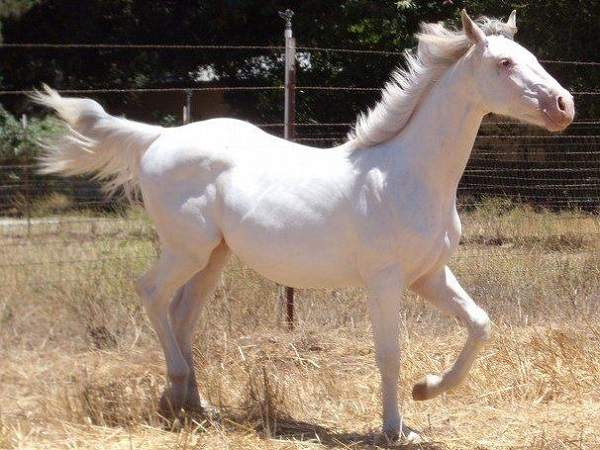
You might think that white horses are not that rare. After all, we’re used to seeing them in horse shows and on TV all the time. However, most of the “white” horses that we’ve seen in our lives are actually gray horses that just appear white. Moreover, It’s been brought to my attention that true white horses don’t actually exist. It’s not just horses – true albino animals are very very rare, but that’s not to say that they can’t “appear” white.
In horses, there are over 6 plus sabino genes that can make a horse snow white. Tennessee Walking Horses, Thoroughbreds, Standardbreds, and Morgans all can exhibit a sabino gene that makes them appear white, but that doesn’t mean that they’re true albinos. Most people believe that horses with red eyes and pink noses are true albinos, but albino is not officially listed as a color on any horse breed, simply because it doesn’t exist.
However, there is a difference between gray horses with white coats, which have black skin, and white horses that have pink skin. It all sounds a bit confusing, I’m sure, but keep in mind that the field of genetics is constantly evolving, and things might become even more complicated still. For now, all you need to know is that there are white horses out there, and they’re rare. It’s just that they’re not albinos in the true sense of the word.
Buckskin.
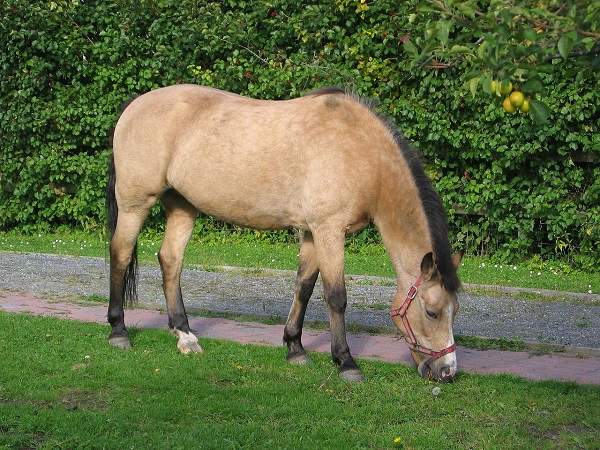
How do you recognize a buckskin horse? As its name suggests, Buckskin is a horse coat color that strongly resembles tanned deerskin. Buckskin horses are bay horses that possess the cream dilution gene. They have tan or gold coats as well as black manes, tails, and lower legs.
People usually confuse Buckskin horses with dun horses, but these are two different horse colors. The difference is that dun horses possess the dun dilution gene while buckskin has the cream dilution gene. I know it can sound confusing at times, especially when some of these horses look so similar to each other. However, the differences are there both genetic-wise and appearance-wise. You just have to pay close attention.
Buckskin is present in many different horse breeds, almost all of them. In order for this color to occur, at least one of the foal’s parents must carry the cream gene. Are buckskin horses rare? Some particular buckskin color patterns are rare and very hard to spot with an untrained eye, but the standard buckskin coloration can occur in most horse breeds and is therefore not as rare as some of the other colors on this list.
Perlino horses.

The thing about Perlino horses is that they look very similar to cremellos, which is why they are often mistaken for them. A Perlino horse has a cream coat with pink skin and blue or glass eyes. There is some variation in their coat color, as it can sometimes appear a pale off-white or even a pale coffee color. The legs of a Perlino horse can be white, but if they are not white they are usually a bit darker than the rest of the coat.
One difference between perlinos and cremellos is that perlinos have darker manes and tails. In order to determine if a cream horse is indeed a cremello or a perlino, one would have to access information about the horse’s pedigree, but even then things can get tricky. If the horse’s parents were both buckskins, then it can be either of the two.
Perlino horses are also named pseudo-albinos. Breeders use these horses to produce palominos, buckskins, and smokey blacks. If you ask me, Perlino is one of the prettiest horse colors out there, right up there with brindle. Speaking of which…
Brindle.
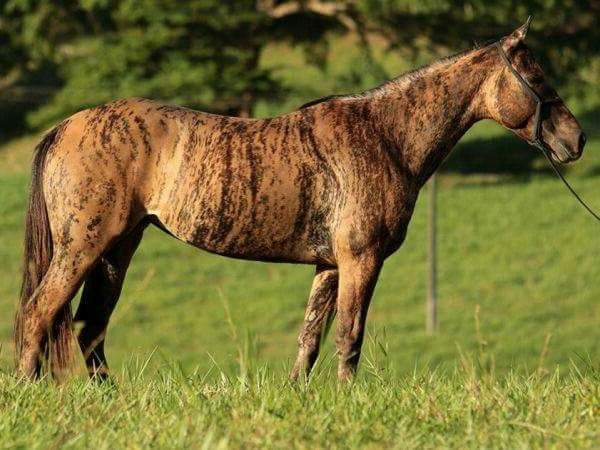
Brindle is an extremely rare horse color and one that definitely deserves a spot on this list. You’ve probably seen brindle coat patterns in dogs and cats before, but not so much in horses. That’s because a horse with a brindle coat is usually linked to spontaneous chimerism – the horse has two sets of DNA. Each set governs a specific part of the coat’s color.
When mixed, the differently colored horse hairs create unique patterns. Indeed, no two Brindle horses look the same. Researchers have found one heritable brindle pattern in Quarter Horses, which seems to indicate that the condition can be hereditary. Dubbed Brindle1, the pattern expresses itself as a striped coat in female horses while male horses have sparse manes and tails but no stripes in the coat.
What makes the brindle coloring stand out in horses is that it has irregular stripes extending vertically over the horse’s body as well as horizontal stripes around the legs. Some brindle horses also have a dorsal stripe.
Champagne horses.
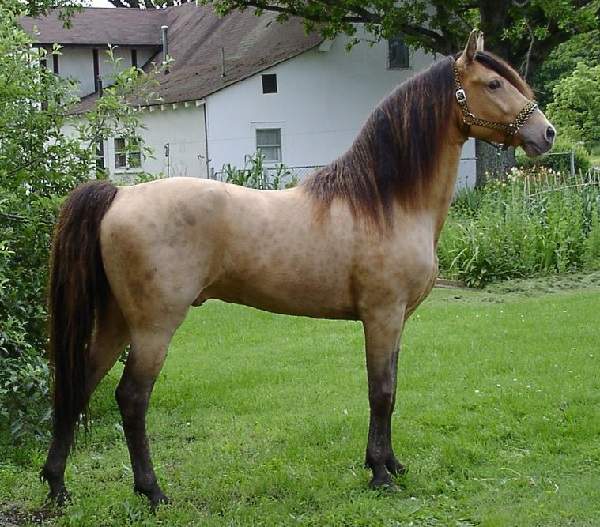
Maybe it’s just me but I think that Champagne horses and the champagne gene, in general, are both incredibly underrated among equestrians. When it comes to the champagne gene, it’s actually responsible for a decent number of rare horse coat colors. One thing that most horses with the champagne gene have in common is a pair of hazel eyes as well as pinkish skin with freckles.
The eyes of these horses are bright blue at birth, though, and the skin is bright pink. As for the coat color, any hair that would normally be red turns to gold, while black hair becomes chocolate brown in champagne horses. In order to inherit this gene, a foal must have at least one champagne parent. There’s even a DNA test to identify the presence of the gene.
There are a few different champagne coat colors in horses. These include classic champagne, sable champagne, amber, and gold. Other horses that might look similar to champagne horses include blue-eyed cream, red dun, and grullo.
Chocolate palomino.
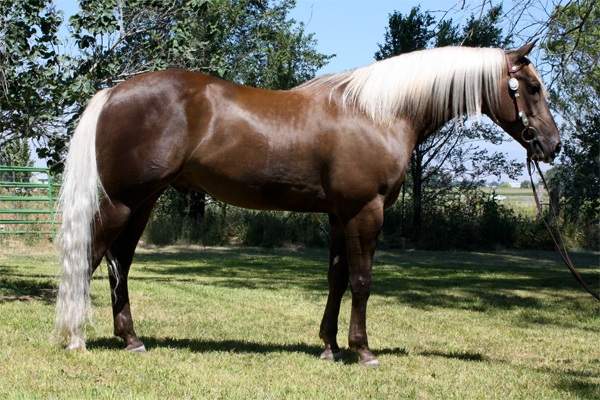
Chocolate Palomino is a very rare horse color as well. In order to obtain a foal with this coloration, breeders must cross a palomino with a liver chestnut. However, the result is not always guaranteed. These horses have the creme dilution gene and chestnut base, which means that they meet the genetic specifications of palomino horses.
As far as their looks are concerned, they boast dark brown coats (chocolate-like), as well as white manes and tails. They can also have some brown hairs in their manes and tails, but that’s even rarer.
What makes a chocolate palomino horse stands out is the unique contrast between its dark coat and white mane/tail. These are truly some of the most beautiful horses in the world, and the fact that they’re so rare only makes them even more special.
Black horses.
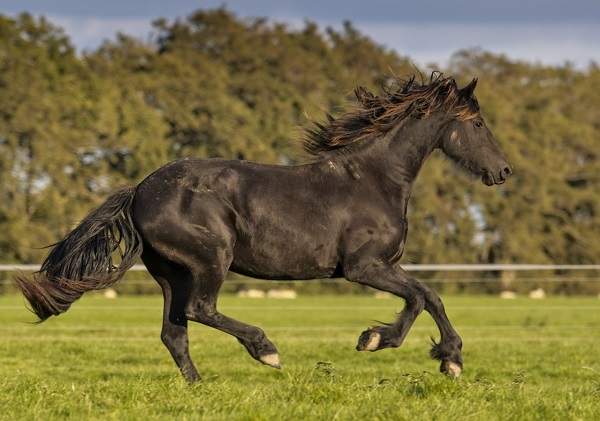
Black horses are fairly uncommon, even though we’ve seen plenty of them in movies and tv shows. Black Beauty is a fine example. What you may not know is that there are two different types of black horses, namely fading black and non-fading black.
The difference between the two is that a fading black horse will take on a brownish color if it sits in the sun on a regular basis. Non-fading black horses are much rarer, and they flaunt a blue-black shade that doesn’t fade in the sun. What’s interesting is that there’s no clear genetic difference between the two types. This has led to hot debates in the equestrian world, as some believe that the aesthetic difference between the two types comes down to simple management.
A horse can only be considered black if it is completely black apart from its white markings. If you have trouble spotting a true black horse amidst a herd of chestnut or bay horses, just look at the hairs around the eyes and muzzle. On a true black horse, these hairs will be black as well.
When it comes to the rarest horse colors in the world, a non-fading black horse definitely qualifies, at least in my opinion.
Silver Dapple.
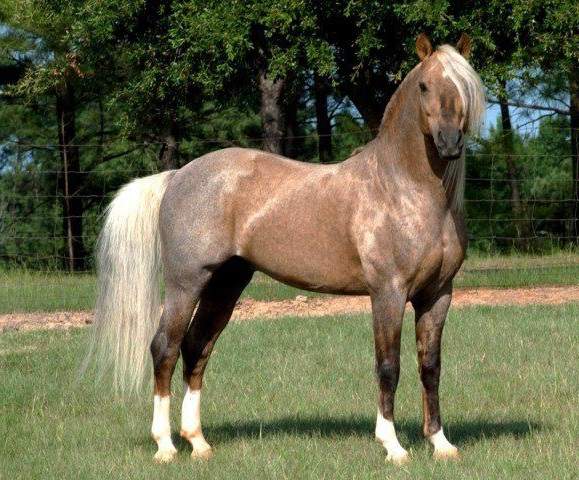
Towards the end of my list of the rarest horse colors, I wanted to include a special coloration that’s attributed to the silver gene. This gene is responsible for a few other horse colors, including Chocolate Flax or Taffy. The silver gene works by diluting or lightening black pigment in the body coat while the mane and tail receive more profound silvering.
Silver Dapple horses have both dapples as well as a silver mane and tail. It’s worth noting that not all horses with this particular gene also have dapples, which makes the Silver Dapple all the rarer. The silver gene occurs in several horse breeds such as Mustangs, Saddlebreds, and Connemaras. In the United States, it sometimes affects the Kentucky Mountain horse and the Missouri Fox Trotter.
The most common Silver Dapple variations are black silver and bay silver. Identifying a silver dapple foal is not always easy. If it has a pale, wheat-colored body coat, white eyelashes, and hooves with tapering vertical stripes, then it’s most likely silver dapple. One negative aspect of the silver dapple gene is that its presence often correlates to Multiple Congenital Ocular Abnormalities in horses.
Flaxen Chestnut.
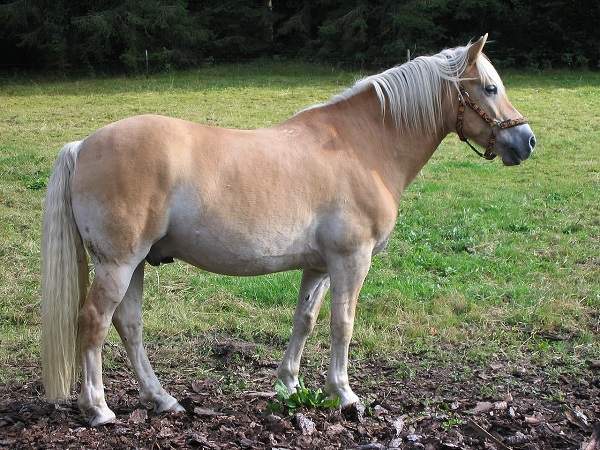
Flaxen Chestnut horses are rare because their unique looks are attributed to the Flaxen gene. This gene causes the mane and tail of chestnut-colored horses to be lighter than their coat colors. It’s not uncommon for the mane and tail to become almost gold-like in appearance.
There are some horse breeds that carry the flaxen chestnut coloration as a default trait. A fine example is the Haflinger horse, on which I’ve written an entire article not too long ago.
Some chestnut horses that carry the flaxen gene are only slightly flaxen, while others are much more noticeable. In Morgan horses, the flaxen trait is inherited, and the gene might also be recessive according to some recent research. Black or bay horses are not affected by the flaxen trait, as it occurs exclusively in chestnut horses.
Final words.
The rarest horse colors in the world are also some of the most beautiful. These horses owe their unique looks to various genes or genetic markups that allow them to take on unusual appearances, especially when it comes to coat color. I should mention that I’m not an expert in genetics, but all of my information on the subject comes from reputable sources.
If you would like me to add another rare horse color to the list, feel free to send me your suggestions. And if you are the proud owner of such a rare horse, don’t hesitate to send me pictures!

